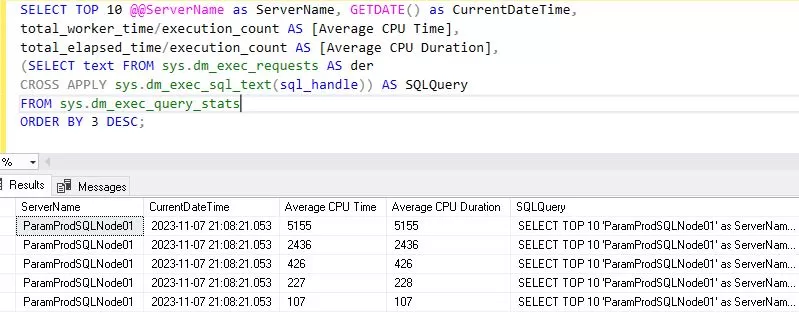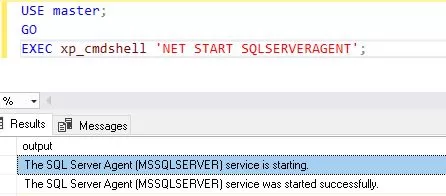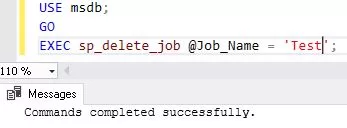For database managers, it might be frightening when the SQL Server Agent refuses to launch. We’ll solve the riddle of SQL Server Agent starting issues in this thorough guide. We’ll examine every facet, from its historical development to the most recent improvements, benefits, and drawbacks. We’ll also cover typical problems, offer step-by-step directions for installing SQL Server Agent, and troubleshoot using T-SQL queries.
Table of Contents
Introduction
The management of crucial SQL Server operations, timely backups, and job automation are all made possible with SQL Server Agent. On the other hand, problems with the SQL Server Agent not starting might cause problems with database management. It is essential that database administrators comprehend the causes of this problem and apply efficient troubleshooting techniques.
A Glimpse into History
Since its introduction by Microsoft, SQL Server Agent has seen tremendous evolution. It was first released with SQL Server 7.0 and has since grown to be a vital tool for work scheduling and task automation in SQL Server installations.
Do you want to know more about the Deadlocks in SQL Server, click here.
Advantages of SQL Agent Service
Automated Scheduling
Users may plan and automate several operations with SQL Agent Service, including database maintenance, report creation, and backups. With the help of automation, important activities are completed on schedule and without human interference.
Management of Jobs
It facilitates the creation, modification, and monitoring of SQL Server tasks by offering a centralized interface for job management. Jobs can have one or more phases, and complicated task sequences can be executed with SQL Agent Service.
Notifying and Alerting
When particular events happen, such as task failures, SQL Agent Service may be set up to deliver warnings and notifications via email or other channels. Database administrators can maintain system stability and respond to issues quickly with the aid of this proactive alerting solution.
Observing and Logging
The task execution history is recorded by SQL Agent Service, giving a comprehensive account of the job’s start and finish timings, status, and any issues that may have occurred. This logging feature is useful for auditing and troubleshooting.
Integration with PowerShell and T-SQL
T-SQL scripts and PowerShell instructions may be executed by SQL Agent jobs, enabling the automation of a variety of activities, including data processing, system monitoring, and database maintenance.
To know more about the DBCC FreeProcCache, click here.Disadvantages of SQL Agent Service
Complexity of configuration
It can be difficult to set up and configure SQL Agent tasks, particularly for users who are unfamiliar with the SQL Server environment. Having a solid grasp of T-SQL or PowerShell scripting is necessary for both creating and maintaining tasks.
Resource Assignment
SQL Agent tasks that are heavy-duty or not well-optimized might use up a lot of server resources, which could negatively impact the performance of other services and apps that share the same server.
Security Issues
Security hazards might arise from SQL Agent tasks that are not set correctly. If jobs with enhanced privileges are not adequately secured and monitored, they may unintentionally disclose important data or jeopardize system security.
Reliance upon SQL Server
SQL Server and SQL Agent Service are closely linked. Scheduled jobs may not execute as planned or may be interrupted if SQL Server becomes unavailable due to problems like server failures or maintenance tasks.
Restricted Error Correction
Although SQL agent has some limited built-in error handling features, it may nonetheless provide warnings if a task fails. Additional modification may be necessary for advanced error handling and retry logic, which can be difficult to accomplish.
Why do we need SQL Server Agent in SQL Server?
An essential component of the SQL Server ecosystem, the SQL Server Agent performs several essential tasks required for efficient management, automation, and oversight of SQL Server databases and related activities. The primary rationales for the requirement of SQL Server Agent are as follows:
Task Planning Done Automatically
With SQL Server Agent, users can automate time-consuming tasks like database backups, index maintenance, data imports and exports, and report preparation. By guaranteeing that specific tasks are completed at preset intervals without requiring human intervention, automation reduces the likelihood of human error and saves time.
Management of Jobs
For task management, SQL Server Agent offers a centralized interface. Tasks in SQL Server Agent may involve several phases and be executed using PowerShell commands, SSIS packages, and T-SQL scripts. Because of this versatility, database administrators can design intricate, multi-step processes that are efficiently planned and monitored.
Warnings and Announcements
When particular events take place, SQL Server Agent may be set up to sound an alarm and send messages. For instance, it can notify managers via email when a task fails or a certain need is satisfied. Database administrators can respond quickly to issues thanks to this proactive alerting system, which makes sure they are aware of them as soon as they arise.
Observation and Note-Taking
The SQL Server Agent keeps thorough records of all task executions, noting status, start and finish times, and any issues that may have occurred. For performance analysis, auditing, and troubleshooting, these logs are priceless. To spot trends, pinpoint issues, and enhance work output, administrators might examine employment histories.
Combining SQL Server with Other Services Integration
Other SQL Server components like Integration Services (SSIS) and Reporting Services (SSRS) may be smoothly integrated with SQL Server Agent. It facilitates the scheduling and administration of report subscriptions and SSIS packages, guaranteeing a smooth workflow for ETL procedures and report production.
Management of Dependencies
Job dependencies may be managed with SQL Server Agent. tasks can be set up to execute in a certain order or respond to the success or failure of other tasks. By guaranteeing that activities are completed in the proper order, dependency management helps to avoid disputes and maintain data integrity.
Preventive Upkeep
Administrators may plan proactive maintenance operations, such as database consistency checks, statistics updates, and index rebuilds, with SQL Server Agent. SQL Server performance is enhanced by automating certain maintenance tasks, making the database system more responsive and effective.
SQL Server Version-wise Agent Enhancements
One of the main parts of SQL Server, the SQL Server Agent, has been improved and enhanced throughout the years. An outline of SQL Server Agent’s version-by-version improvements is shown below:
SQL Server 2005
Integration with Database Mail was introduced in SQL Server 2005, allowing the SQL Server Agent to deliver email notifications via the Database Mail system. The alerting and notification features were improved by this feature.
SQL Server 2008
Multi-Server tasks: One of the new features of SQL Server 2008 is the ability to manage and run tasks across many instances of SQL Server. In intricate, multi-server settings, this improvement simplified the task administration process.
Resource Governor Integration: By managing SQL Server Agent jobs inside the Resource Governor framework, server resources might now be allocated more effectively.
SQL Server 2012
AlwaysOn Integration: SQL Server 2012 integrated SQL Server Agent with AlwaysOn Availability Groups, allowing jobs to be automatically failed over to a secondary replica in case of primary replica failure.
SQL Server 2014
Backup to Azure: SQL Server 2014 introduced the ability to back up to and restore from Azure Storage, extending the backup capabilities of SQL Server Agent to the cloud.
SQL Server 2016
Temporal Tables: SQL Server 2016 introduced system-versioned temporal tables. SQL Server Agent gained support for managing jobs related to temporal tables, enhancing automation capabilities for this feature.
SQL Server 2017
Graph Jobs: Support for graph databases was added to SQL Server 2017. Task automation and scheduling about graph databases are now possible thanks to enhancements made to SQL Server Agent.
SQL Server 2019
Integration of Big Data Clusters: Big data clusters are a feature of SQL Server 2019 that brings together Spark, Hadoop, and SQL Server. The SQL Server Agent was improved to handle tasks associated with big data clusters, offering these intricate, multi-technology environments automation capabilities.
Machine Learning Services: SQL Server 2019 combined SQL Server Agent with Machine Learning Services, enabling the planning and execution of operations about machine learning scripts and models.
SQL Server 2022
Enhanced Security: SQL Server 2022 brought new security features that probably affected SQL Server Agent, guaranteeing data protection and safe task execution.
Differences between SQL Agent & Task Scheduler
SQL Server Agent:
Database-Oriented
One part made especially for handling SQL Server-related duties is the SQL Server Agent. It is perfect for planning and executing SQL Server-specific operations, such as data integration, index upkeep, and backups.
Closely Integrated
SQL Server and SQL Server Agent are closely linked. You can execute T-SQL scripts, SSIS packages, and PowerShell commands directly since it comprehends SQL Server objects. This interface offers comprehensive monitoring and logging capabilities while streamlining the administration of database-related chores.
Advanced Job Management
It is possible to create intricate task schedules with several phases and dependencies using the SQL Server agent. Jobs with error handling, alerts, and logging capabilities may be set to run in response to a variety of events. It offers a thorough framework for controlling and keeping an eye on the SQL Server activities.
Alerts Specific to SQL Server
Based on the SQL Server-specific events, such as failures, warnings, or performance thresholds, SQL Server Agent can provide alerts. Administrator notifications or automatic reactions may be triggered by these warnings.
Management in One Location
To generate, schedule, and monitor tasks, SQL Server Agent offers a centralized interface inside SQL Server Management Studio (SSMS). It provides a centralized setting for handling SQL Server-related duties.
Task Scheduler:
System-Oriented
SQL Server is only one of the many jobs that may be scheduled using the Windows operating system’s Task Scheduler system application. Programs, scripts, or batch files can be run at predetermined intervals or in reaction to certain circumstances.
General-Purpose
Task Scheduler is a flexible tool for managing a wide range of system and application-related activities, not just SQL Server tasks. It may be used to schedule any executable or script.
Time-Based and Event-Driven Triggers
Task Scheduler can be started at predetermined periods or in response to certain events (such as system starting, user login, or a specific event log entry). It offers flexibility in the scheduling of work according to various standards.
Restricted Logging and Monitoring
While Task Scheduler may log in, it cannot provide the kind of thorough monitoring and reporting that SQL Server Agent does. Although it may record the status of a task’s execution, it falls short of SQL Server Agent in terms of job-specific insights and error management.
Different Management Interface
Distinct from SQL Server administration Studio, Task Scheduler has its administration panel in the Windows Control Panel. Because tasks are maintained separately from SQL Server, it’s a more versatile scheduling tool.
Do you know the differences between Power BI vs SSRS. Click here to know more.SQL Server agent won’t start: causes & possible solutions
SQL Server job scheduling and other crucial automated processes may be affected when the SQL Server Agent won’t start. This problem has many common causes, each with a different fix. The following are potential reasons and to fix this issue, along with pertinent T-SQL queries:
In case of inadequate authorization, SQL Server agent won’t start
Cause: It’s possible that the SQL Server Agent service account does not have the required permissions.
Resolution: Verify that the service account has the required folder permissions and SQL Server permissions.
SQL Server agent won’t start if the Service Account is configured Improperly
Cause: An improper or expired service account may be used to configure the SQL Server Agent service.
Resolution: Use SQL Server Configuration Manager to check & modify the SQL Server Agent service account.
USE master;
GO
EXEC xp_cmdshell ‘NET START SQLSERVERAGENT’;
SQL Server agent won’t start if the master database is corrupted
Cause: The SQL Server Agent may not start if there is corruption in the master database.
Resolution: Either fix the master database or recover it from a reliable backup.
RESTORE DATABASE master FROM DISK = 'D:\DBBackups\SQL\Master_Full_20231110_143556.bak' WITH REPLACE;In case of conflict over resources, SQL Server agent won’t start
Cause: High CPU or memory utilization by SQL Server processes or other apps leading to resource conflict.
Resolution: Determine and address problems with resource contention. Resource-intensive queries may be traced using SQL Server Profiler.
--Find CPU Intensive Queries
SELECT TOP 10 @@ServerName AS ServerName,GETDATE() AS CurrentDateTime,
Total_Worker_Time/Execution_Count AS [Average CPU Time],
Total_Elapsed_Time/Execution_Count AS [Average CPU Duration],
(SELECT TEXT sys FROM sys.dm_exec_requests AS der
CROSS APPLY sys.dm_exec_sql_text(sql_handle)) AS SQLQuery
FROM sys.dm_exec_query_stats
ORDER BY 3 DESC;
SQL Server agent won’t start if the SQL Server Agent is not configured properly
Cause: Inaccurate SQL Server Agent setup settings.
Resolution: Examine and modify SQL Server Agent settings, paying particular attention to the starting parameters.
-- To validate Agent service account
EXEC xp_cmdshell 'whoami';
-- To check Agent properties
EXEC msdb.dbo.sp_get_sqlagent_properties;
If the SQL Server Agent is disabled, SQL Server agent won’t start
Cause: SQL Server Configuration Manager may have deactivated SQL Server Agent.
Resolution: In SQL Server Configuration Manager, enable the SQL Server Agent service.
USE master;
GO
EXEC xp_cmdshell 'NET START SQLSERVERAGENT';
Any Issue with SQL Server Version Compatibility, SQL Server agent won’t start
Cause: SQL Server Agent and SQL Server version incompatibility.
Resolution: Verify that the SQL Server instance and the SQL Server Agent version are compatible.
SELECT @@VERSION, SERVERPROPERTY('Edition');Any Issue with SQL Server Edition, SQL Server agent won’t start
Cause: SQL Server agent won’t start.
Resolution: SQL Server agent won’t start if the edition of SQL Server is Express Edition. This is as per Microsoft policy.
Corruption in SQL Server Agent Jobs
Cause: This is the result of corruption in SQL Server Agent jobs.
Resolution: Recreate or rebuild the tainted jobs.
USE msdb;
GO
EXEC sp_delete_job @Job_Name = 'SQLAgentJobName';
After deleting the job, recreate the job.
Always make sure you have a backup of your most important databases before carrying out any significant changes or activities. Numerous difficulties connected to SQL Server Agent starting issues can be avoided with routine monitoring and maintenance. To precisely identify the problem’s source if you’re not sure what’s causing it, look through the SQL Server error log and event viewer for more in-depth error messages.
FAQs
Q1: What is causing the SQL Server Agent to not launch?
Ans: Frequently cited causes include inadequate authorization, problems with service accounts, or constraints on system resources.
Q2: If I don’t have SQL Server Agent, can I plan backups?
Ans: Windows Task Scheduler is a viable choice, however, SQL Server Agent provides superior integration and administration features.
Q3: How can I diagnose problems with the SQL Server Agent’s startup?
Ans: Examine event logs, confirm permissions for service accounts, and make sure all required system resources are available.
Q4: Does every SQL Server edition come with SQL Server Agent?
Ans: The SQL Server Express versions do not have it.
Q5: Can jobs using SQL Server Agent be executed on many servers?
Ans: The tasks are unique to the server on which SQL Server Agent is installed.
Q6: What kinds of jobs are typical for SQL Server Agents?
Ans: Common task kinds include data imports, database consistency checks, index maintenance, and backups.
Q7: Can PowerShell scripts be used with SQL Server Agent?
Ans: Yes, PowerShell scripts may be run by SQL Server Agent as part of a task.
Q8: Can I receive failure alerts from SQL Server Agent jobs?
Ans: You may use the SQL Server Agent error handling tools and set up email notifications.
Q9: How much job history can a SQL Server Agent save at most?
Ans: It keeps the task history for 1000 rows by default.
Q10: Can I see the SQL Server Agent from a distance?
Ans: You may monitor SQL Server Agent on distant servers by using SQL Server Management Studio (SSMS).
Conclusion
Comprehending the complexities of SQL Server Agent starting problems is essential for effective database administration. Administrators may maximize the potential of SQL Server Agent for automation and job scheduling by ensuring its smooth functioning, employing T-SQL queries, and troubleshooting techniques.


Informative article, exactly what I wanted to find.